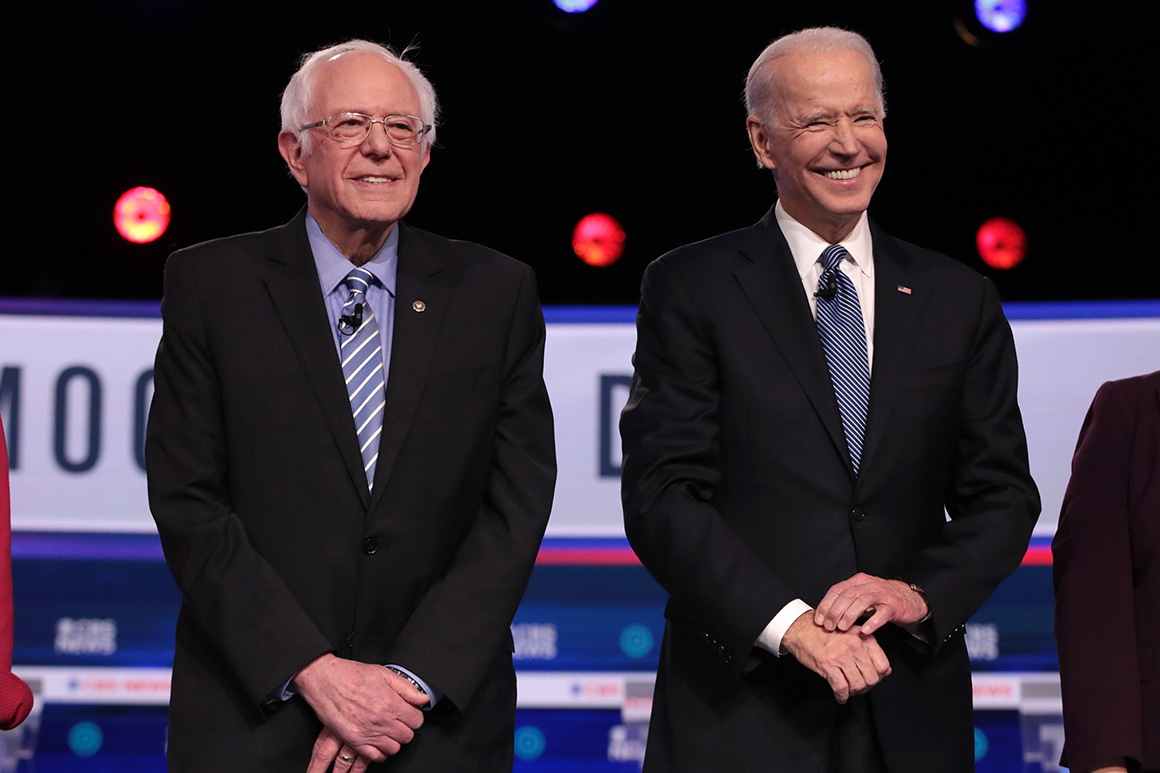
And the secret to the tapping that power in 2020 isn’t about freshness or dazzle or political pyrotechnics. It isn’t even necessarily about love. It is about connecting with familiar Democratic constituencies and convincing them that, all things considered, a candidate’s assets outweigh defects.
Joe Biden’ victories—by margins so large, in states so diverse that in his victory speech he seemed surprised by his own sudden breadth of support—were fueled by ancient Democratic constituencies, African Americans and labor, as well as suburbanites newly energized by opposition to President Donald Trump.
The early portion of the night highlighted the skepticism that many of these blocs have toward self-described democratic socialist Bernie Sanders. But the later portion of the night, when California was called for Sanders the moment polls closed, shows that he too has a firm grasp on key Democratic constituencies—the young left, as well as many Hispanic voters, among others who regard Trump as more symptom than cause of what troubles the country and are seeking radical change.
So in an electorate increasingly defined by diversity and youth, these two older white men, both born during FDR’s third term, for now have the once-crowded field effectively to themselves.
Fellow septuagenarians Mike Bloomberg and Elizabeth Warren pledged, for now, to stay in the race, but nothing beyond a sprinkling of delegate wins across 14 states illuminated a likely path to the nomination. Probably the only honest rationale for their candidacies is, Who knows? Stuff happens.
That is true. The record of this contest shows how perilous the top has been, sequentially, for Biden (way back when at the start); for Warren (who wilted in the fall after a strong summer); for Pete Buttigieg (who won Iowa and almost won New Hampshire, only to demonstrate that those states don’t matter as much in years past) to Sanders (who just days ago was riding a wave of commentary that, based on comparisons to Trump in 2016, regarded his nomination as a strong probability.)
That smart-set consensus seemed a bit rash in an age when certitudes are so regularly smashed. And Tuesday proved it. It is time to exhale and relinquish notions that this race is about to be imminently put to bed. It is possible it will still be unsettled by the time of the Democratic National Convention in Milwaukee in July.
As impressive as Biden’s victories were— 47 percentage points over Sanders in Alabama, a 30-point margin in Virginia, surprise single-digit wins in Massachusetts and Minnesota—the sheer size of California and Texas, where Biden was leading Sanders narrowly, left the evening’s delegate totals still uncertain as Tuesday night blurred into Wednesday morning. To arrive in Milwaukee with a clear majority, Biden would need to repeat his big night several times over in coming weeks. He would also need to put an end to Sanders winning large states by large margins, as he was on track to do in California.
Even so, Biden on Tuesday became something he had never been before during five decades in national politics: a phenomenon. Support surged toward someone who just a week earlier, before his commanding victory in the South Carolina primary, had been clinging barely to viability in the race.
Most notable was that this surge did not involve the classic tools of politics. He was handily outspent in most states by Sanders and massively outspent by Bloomberg, who laid out $500 million for his distant third-place showing. Biden won in states where he had scant advertising and even more scant organization.
Exit polls conducted on behalf of a consortium of news organizations by Edison Research told the story. More than 6 in 10 African American voters propelled Biden to victory in Alabama, North Carolina and Virginia, according to CNN. Older voters also backed him by wide margins.
Biden roared in suburban areas. In Fairfax County, Virginia’s largest locality by far, Biden took just shy of 50 percent of the vote in this suburb of the nation’s capital, results that were mirrored in other places. In Virginia and Minnesota, half of the voters made up their minds who they were voting for over the past few days, according to exit polls, and in every Super Tuesday state, voters said a candidate being able to beat Trump was more important to them than a candidate who is most in line with their views.
Minnesota and Massachusetts showed the late-breaking phenomenon in full effect. Sanders won Minnesota in 2016 and held a big rally in the Twin Cities on Monday. After winning an endorsement from former 2020 candidate Amy Klobuchar, Biden carried the state by 9 points. Massachusetts until recent days was seen as a battle between Sanders and Warren. Biden raced past both with more than 33 percent of the vote, a full 13 points ahead of Warren, who finished third in her home state.
Biden, speaking in Los Angeles on Tuesday night, paid deference to the voting blocs who pulled him over the line. “Look, our campaign reflects the diversity of this party in this nation, and that’s how it should be, because we need to bring everybody along — everybody.”
He also noted that lately he has been living dangerously. “Just a few days ago, the press and the pundits had declared the campaign dead, and then came South Carolina and they had something to say about it,” Biden cheered. “We were told, ‘Well, when you got to Super Tuesday, it would be over.’ Well, it may be over for the other guy. … So, I’m here to report, we are very much alive.”
Source: politico.com
See more here: news365.stream






